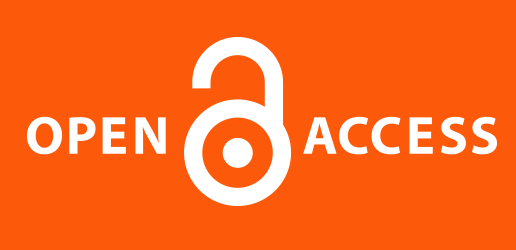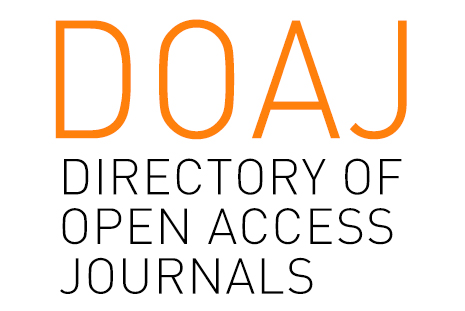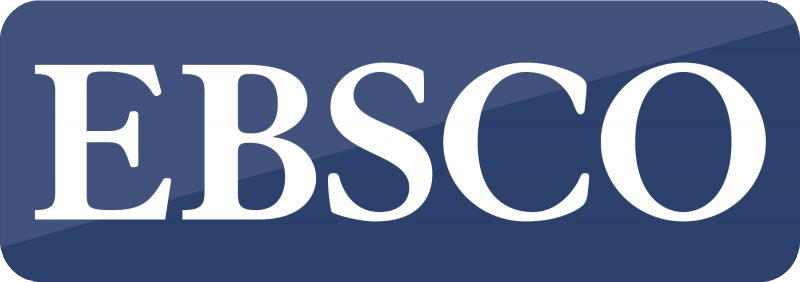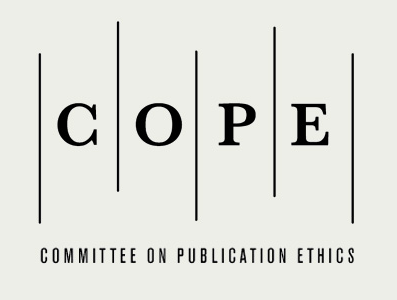Модел дигиталног наставног окружења за страни језик струке
Мирослава Р. Ристић, Универзитет у Београду, Учитељски факултет, имејл: miroslava.ristic@uf.bg.ac.rs
Иновације у настави, XXXII, 2019/2, стр. 106–121
| PDF | | Extended summary PDF |
doi:10.5937/inovacije1902106R
Резиме: Циљ рада је да се на основу критички сагледаних проблема у настави страног језика струке и анализе образовних потенцијала дигиталних технологија, у контексту актуелних стратегија и законских решења у области образовања у Србији, предложи модел дигиталног наставног окружења који би унапредио и усавршио наставу страног језика струке на друштвено-хуманистичким факултетима у Србији. Ова проблематика је у истраживању сагледана из теоријско-концепцијског и евалуационог аспекта. Теоријско-концепцијски аспект утемељен је на научнотеоријској и методолошкој заснованости наставе страног језика струке и образовне технологије, као факторима који су релевантни за универзитетску наставу. Евалуациони аспект односи се на критичку анализу дигиталних технологија које се ефикасно и ефективно могу употребити у изградњи модела за страни језик струке. У раду су размотрена теоријска полазишта SAMR и TPACK модела, као и могућности и изазови коришћења дигиталне технологије у настави страног језика струке. Спроведена анализа показује да наставници имају могућности примене паметних уређаја, веб-апликација и алата за припрему, реализацију и евалуацију наставе, али да нису обучени да се укључе у планирање и изградњу дигиталног наставног окружења, јер током иницијалног образовања нису припремани за такав вид наставе.
Кључне речи: страни језик струке, дигиталне технологије, модел, наставник, студент.
Summary: The aim of this paper is to present a digital environment teaching model, based on critically observed problems in teaching the foreign language for specific purposes and the analysis of the educational potentials of digital technologies, in the context of the current strategies and legal solutions in the field of education in Serbia, which would advance and improve the teaching of the foreign language for specific purposes at the faculties of social sciences and humanities in Serbia. The subject of this research has been examined from both theoretical-conceptual and evaluation aspects. The theoretical and conceptual aspect is based on the scientific, theoretical and methodological connotation of teaching the foreign language for specific purposes and educational technology, as factors which are relevant to university teaching. The evaluation aspect refers to a critical analysis of digital technologies which can be efficiently and effectively used in creating a model for teaching a foreign language for specific purposes. The theoretical starting points of SAMR and TPACK models as well as the possibilities and challenges of using digital technology in teaching of the foreign language for specific purposes are considered. The conducted analysis shows that teachers have the opportunity to apply smart devices, web applications and tools for preparing, implementing and evaluating teaching, but that they are not prepared to engage in the planning and construction of a digital teaching environment, since they have not been trained for this type of teaching during initial education.
Keywords: language for specific purposes, digital technologies, model, teacher, student.
Литература
- Ally, M. (2004). Foundations of educational theory for online learning. Theory and practice of online learning. 2,
15–44. - AMRES (2018). Više od 1500 škola na AMRES mreži. Retrieved September 22, 2018. from www: https://www.
amres.ac.rs/cp/vise-od-1500-skola-na-amres-mrezi. - Balanskat, A. (2013). Introducing tablets in schools: The Acer-European Schoolnet tablet pilot. Brussels: European
Schoolnet. - Belcher, D. (2013). The Future of ESP Research: Resources for Access and Choice. The handbook of English for
specific purposes. West-Sussex: Wiley-blackwell. - Camiciottoli, B. C. (2010). Meeting the challenges of European student mobility: Preparing Italian Erasmus
students for business lectures in English. English for Specific Purposes. 29 (4), 268–280. - Churches, A. (2010). Bloom’s digital taxonomy. Posećeno 1.8.2018. na: http://burtonslifelearning.pbworks.
com/f/BloomDigitalTaxonomy2001.pdf - Crystal, D. (2006). Language and the Internet. New York/Cambridge: Cambridge University Press.
- Davies, G., Otto, S. E. & Rüschoff, B. (2013). Historical perspectives on CALL. Contemporary computer-assisted
language learning. 19–38. - Dumančić, M. (2017). Nastava i škola za net generacije. U: Matijević, M. (ur.). Mobilne tehnologije u obrazovanju
(115–144). Zagreb: Učiteljski fakultet Sveučilišta u Zagrebu. - Erben, T., Ban, R. & Castaneda, M. (2008). Teaching English language learners through technology. New York:
Routledge. - EURYDICE – European Unit, European Commission. Directorate-General for Education & Socrates
(Programme) (2001). National actions to implement lifelong learning in Europe (277). EURYDICE, European
Unit. - Hutchinson, T. & Waters, A. (1987). English for specific purposes, A learning centred approch. Cambridge:
Cambridge university Press. - Janković, N. (2018). Evaluation, testing and assessment in English language teaching. Evaluation in contemporary
education − theory and practice (160−176). Belgrade − Nowy Sacz: Teacher Education Faculty − State Higher
Vocational School. ISBN: 978-86-7849-249-5. pp. - Mirić, M., Đorović, D. (2015). Nastava stranih jezika na univerzitetu − saradnja nastavnika jezika struke i
nastavnika stručnih predmeta. Nastava i vaspitanje. 64 (3), 507–520. - Mishra, P. & Koehler, M. J. (2006). Technological pedagogical content knowledge: A framework for teacher
knowledge. Teachers college record. 108 (6), 1017–1054. - Noytim, U. (2006). The impact of the Internet on English language teaching: A case study at a Thai Rajabhat
university (doctoral dissertation). Faculty of Education, University of Technology, Sydney. - Paltridge, B. & Starfield, S. (Eds.) (2013). The handbook of English for specific purposes (592). West-Sussex:
Wiley-blackwell. - Paprić, M. (2018). Savremena nastava ruskog jezika struke: problemi i perspektive. Inovacije u nastavi. 31 (1),
43–57. - Platten, E. (2003). Chat-Tutoren im Didaktischen Chat-Raum—Sprachliche Hilfen und
Moderation. Fremdsprachenlernen mit digitalen Medien (145–177). Tübingen: Gunter Narr Verlag. - Puentedura, R. (2014). Learning, technology, and the SAMR model: Goals, processes, and practice. [Web
log post]. Retrieved September 3, 2018. from http://www.hippasus.com/rrpweblog/archives/2014/06/29/
LearningTechnologySAMRModel.pdf - Radojković Ilić, K. B. (2017). Nastava jezika za posebne namene kao zasebno područje didaktike. Metodički
vidici. 7 (7), 403–422. DOI: https://doi.org/10.19090/mv.2016.7.403-422. - Ristić, M. (2019). M-učenje u nastavi stranog jezika – modeli integracije. Nasleđe, Kragujevac. 42, 313–326.
- Ristić, M., Mandić D. (2017). Obrazovanje na daljinu. Beograd: Učiteljski fakultet.
- Ristić, M., Radovanović, I. (2013). Internet u obrazovanju. Beograd: Učiteljski fakultet.
- Ristić, M. (2018). Digitalne kompetencije nastavnika i saradnika. U: Katić, V. (ur.). Zbornik radova XXIV skupа
Trendovi razvoja − Digitalizacija visokog obrazovanja (123–126). Kopaonik, 21−23. 2. 2018. - Ristić, M., Blagdanić, S. (2017). Nove perspektive u obrazovanju – vanučionička nastava u digitalnom okruženju.
Inovacije u nastavi. XXX (2), 1–14. DOI:10.5937/inovacije1702001R. - Ruhe, V. & Zumbo, B. D. (2009). Evaluation in distance education and e-learning: The unfolding model. Retrieved
August 29, 2018. from www: http://www. murdoch. eblib. com. AU. EBLWeb/patron. - Sawyer, L. B. E. & Rimm-Kaufman, S. E. (2007). Teacher collaboration in the context of the responsive classroom
approach. Teachers and Teaching: theory and practice. 3, 211–245. - Selvi, K. (2010). Teachers’ competencies. Cultura International Journal of Philosophy of Culture and Axiology. 7
(1), 167–175. - Stoković, G., Ristić, M. (2016). Razvoj digitalnih kompetencija nastavnika razredne nastave. U: Ristić, M.,
Vujović, A. (ur.). Zbornik sa međunarodnog naučnog skupa Didaktičko-metodički pristupi i strategije – podrška
učenju i razvoju dece (423–435). Beograd: Učiteljski fakultet. - Strategijа razvoja visokog obrazovanja u Srbiji do 2020. godine (2012). Službeni glasnik RS, br. 107.
- Tulodziecki, G. & Grafe, S. (2012). Approaches to learning with media and media literacy education–trends
and current situation in Germany. Journal of Media Literacy Education. 4 (1), 5. - Vilotijević, M., Mandić, D. (2016). Informatičko-razvijajuća nastava u efikasnoj školi. Beograd: Srpska akademija
obrazovanja i Učiteljski fakultet. - Vujin, V. (2013). Elektronsko obrazovanje u računarskom oblaku. Beograd: Zadužbina Andrejević.
- Vujović, A. (2009). Le français en tant que langue de spécialité en Serbie. Filološki pregled. XXXVI (2), 305–312.
- Vujović, A. (2010). Interculturality in teaching language for specific purposes. Nasleđe, Kragujevac. 7 (15/1),
207–215. - Vujović, A., Ristić, M. (2015). Hibridna nastava – mogućnosti realizacije modela izokrenute učionice u nastavi
francuskog jezika na Učiteljskom fakultetu. Primenjena lingvistika. 16 143–151. - Warschauer, M. (1996). Computer-assisted language learning: An introduction. Multimedia language
teaching. 320.
Copyright © 2019 by the authors, licensee Teacher Education Faculty University of Belgrade, SERBIA. This is an open access article distributed under the terms of the Creative Commons Attribution License (CC BY 4.0) (https://creativecommons.org/licenses/by/4.0/), which permits unrestricted use, distribution, and reproduction in any medium, provided the original paper is accurately cited.





